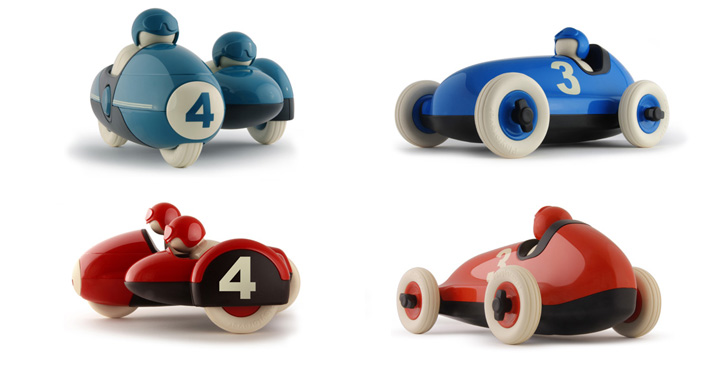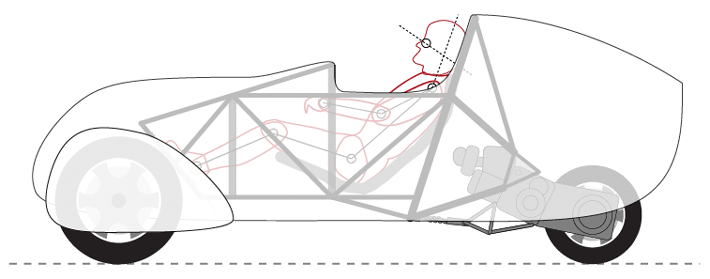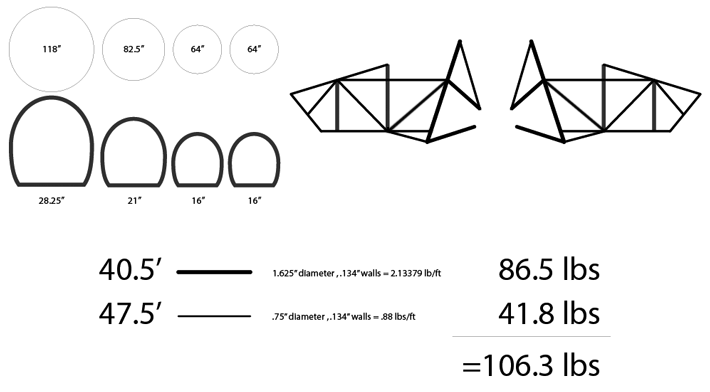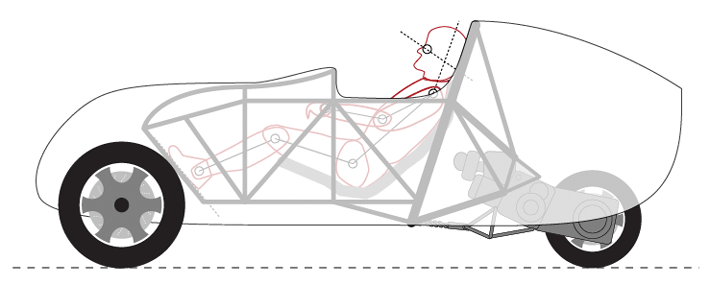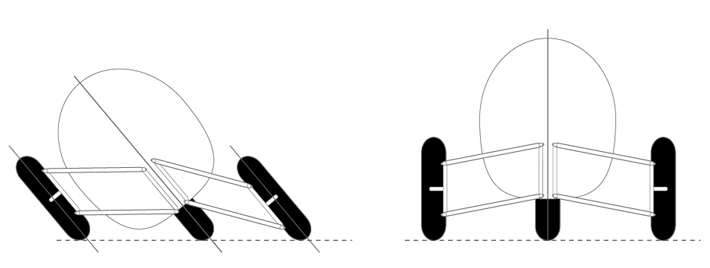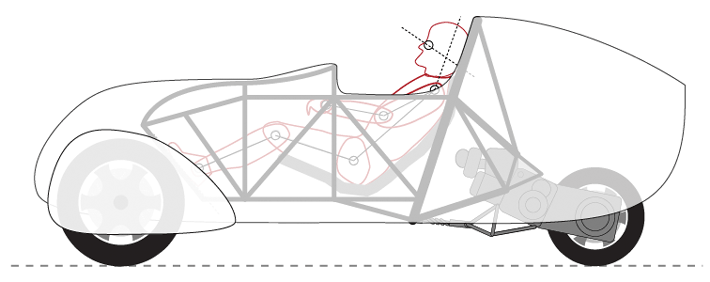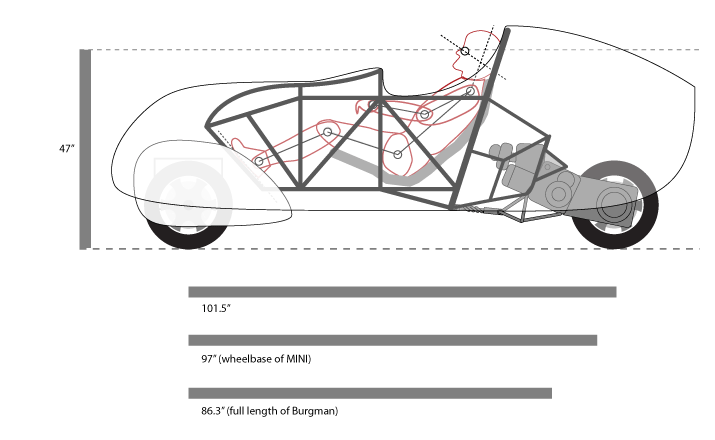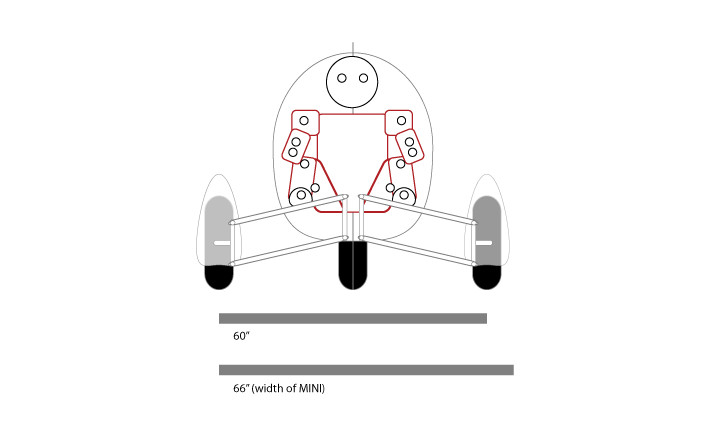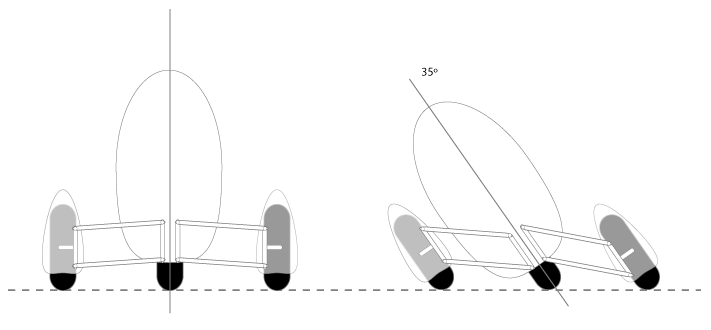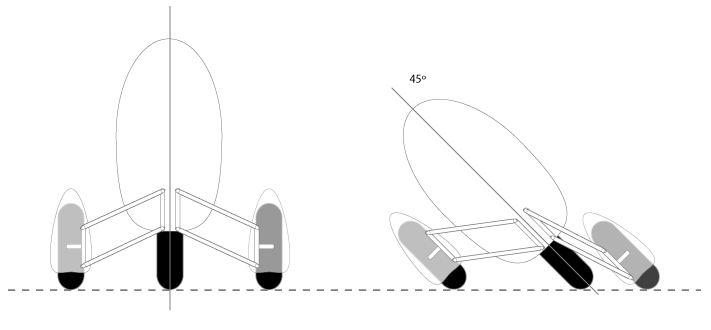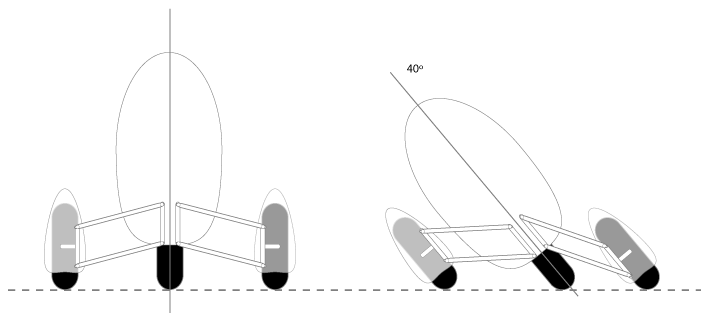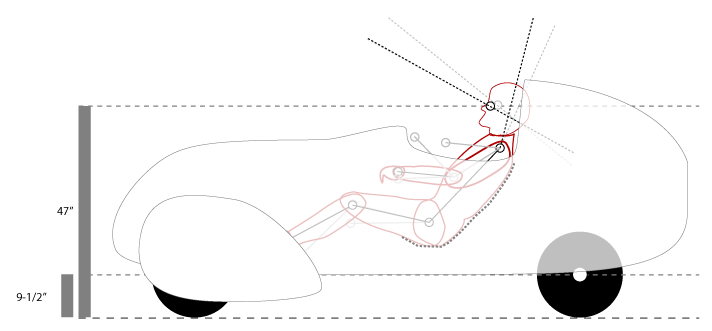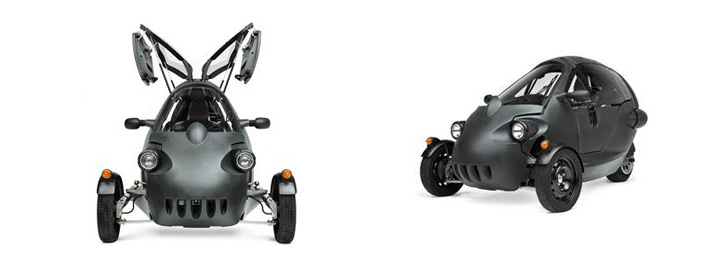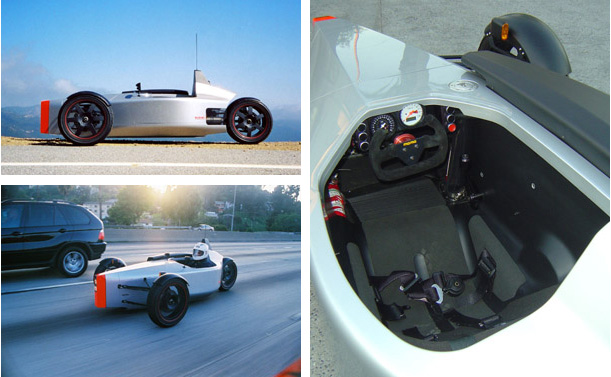This vehicle exists in sort of a strange place in-between being a car and a motorcycle. It will lean like a motorcycle and utilize big scooter mechanicals, but it will also be enclosed like a car. There will be no need to put my feet down at intersections, because a simple on-demand locking system on the tilting suspension will allow the vehicle to stand on its own three wheels (which will also remove the need for a side or center stand). Being enclosed will mean both comfort, aerodynamic efficiency, and actually a large amount of safety. There really is a lot of elegant convergence here. The locking tilt actually enables me to never need to put my feet down, which makes enclosing the vehicle easier with no need for holes or “bomb bay doors” to pass my feet through. What I have yet to figure out, however, is how to back up.
You simply can’t not have reverse. Sure, most motorcycles / scooters don’t have a reverse gear, but you still have to “walk” them backwards to get out of parking spaces and other common driving situations. Some large motorcycles such as the Honda Goldwing do have actual reverse mechanisms, as do electric bikes like the Vectrix that use their hub motor for regenerative braking. But so far, I haven’t been able to locate a scooter in the 400-600cc range that includes a reverse gear. This year’s Honda Silverwing info says the following:
The V-Matic means no shifting, ever—not even into Neutral or Reverse.
This would seem promising, but a phone call to my local Honda dealer confirms that this is in fact just really, really bad marketing copy. So I’m at a bit of an impasse. Reverse is a must, but I can’t find it built-in to any of the powerplants I’m considering for this project. So I’ve got to figure this out.
Electric option #1: Hub motors in the front wheels
There are a couple of ways that I could utilize electric motors for reverse. One route would be to use hub motors in the front wheels and essentially make an electric hybrid. Piaggio has a hybrid version of the MP3 that does exactly that. Front hub motors would make regenerative braking available, and with that, reverse. The major, and in my opinion, irrevocable barrier to this option is its complexity and its expense. I’d likely have to purchase those hub motors directly from Piaggio and they wouldn’t come cheap. Then there’s the batteries, which add significant weight, and the added complexity of all the speed controllers and power management systems it would take to link the motors to the throttle and balance them against the IC engine. As cool as a hybrid would be, it’s an awful long way to go just for reverse.
Electric option #2: Drive the rear wheel on either direct friction, a sprocket, or a clutch
There are a number of electric and IC engine kits out there for motorizing bicycles. Many of these involve a friction roller that contacts the rear tire. Although probably not the most elegant solution, something similar could work very well. A small, high-torque motor like a wheel chair motor or a even an ATV winch motor could be suspended from a subframe that could be lowered against the rear wheel to turn it backwards. I’m picturing something like a hand-brake lever with a trigger button on it to run the motor. The Lightstar Pulse used a similar system, except that they used an aluminum cone pushed against the wheel rim instead of a rubber wheel on the tire. Online owners report that it’s adequate, although very slow and apparently a massive battery drain. I was already planning to run a significantly larger battery than would be standard in a scooter in order to support a handful of ancillary electronics, so perhaps that would be enough, presuming the bike’s stock charging system can replenish it.
One related idea I had in this vein would be to use a sprocket on the wheel that the motor could engage with its own toothed gear. Perhaps a starter motor/solenoid system would work. Apparently the Honda Goldwing uses a reversible starter motor for its reversing functions, albeit at the flywheel. The one thing I wonder about would be the wear and tear of that kind of engagement. As for the sprocket, I was thinking that I could just have teeth put on the rear brake rotor. It’d mean a bit of precision bracketry, but may indeed be the ideal arrangement.
The third variation would be to use a belt or chain drive between a motor and a sprocket/pulley on the rear wheel and be able to engage a clutch on that mechanism. Depending on how it was set up, it could even double as a low-speed charging system to recoup some of the energy used in backing out of a parking space.
Manual option #1: The Fred Flintstone method
Most velomobile trikes have a pair of holes in the bottom of them to allow the rider to back up under foot power. This could work for the Streetliner, presuming I have enough leverage to scoot the weight from a seated position. Having a pair of permanent holes in the underside of the vehicle does not appeal to me at all. Nor does having some sort of door/hatch system. This thing is complicated enough. Although, I have to admit, there is an elegance to just hoofing it.
Manual option #2: Some sort of crank to the rear wheel
Perhaps some of the electric methods described above could be similarly executed with a hand or foot crank in the cockpit. I’m not looking for fast reverse, just enough to get in and out of parking spaces and perhaps back up far enough to then pull forward around an obstacle like a stalled vehicle. There’s something deliciously old-school about that, but it’s probably not the best solution.
Any ideas? I haven’t come to a solution I like yet. What haven’t I thought of?

